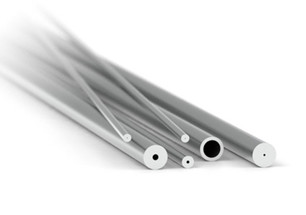Posted by Chrom Tech on 15th Oct 2025
To Cut or Not-to-Cut
When setting up an HPLC system, ensuring that tubing ends are flat, clean, and burr-free is essential for achieving accurate, reproducible results. A properly prepared connection minimizes dead volume, prevents leaks, and reduces unwanted dispersion that can distort chromatographic peaks. One common question that arises is whether it’s worth paying extra for pre-cut stainless steel tubing—or if it’s more economical to cut tubing manually in the lab.
The Importance of Clean Tubing Cuts
In chromatography, every microliter of extra volume can influence resolution and peak shape. When tubing ends are jagged or deformed, they can create extracolumn effects—leading to peak broadening, reduced sensitivity, and less efficient separations. This is especially critical as modern HPLC systems move toward smaller internal diameters and higher detector sensitivity, where even minor imperfections become noticeable.
Cutting tubing in the lab is possible, but it requires precision and the right tools. Small errors during cutting or deburring can compromise both system performance and reproducibility.
Cutting Stainless Steel Tubing in the Lab
If you must cut stainless steel tubing yourself, using a high-quality cutting tool is crucial. Chrom Tech recommends the Terry-Tool for this purpose. Designed specifically for chromatography tubing, the Terry Tool rotates around the tubing axis to create a clean, controlled cut. After scoring, applying light pressure to each side of the groove will snap the tubing apart cleanly—without deforming the ends. This allows ferrules and nuts to slip on easily and eliminates the need for additional reaming or deburring in most cases.
Advantages of Pre-Cut Stainless Steel Tubing
For chromatographers with precise analytical requirements, pre-cut 316 stainless steel tubing is a worthwhile investment. Each pre-cut length from Chrom Tech undergoes careful preparation, including:
- Machine-cut precision with flat, burr-free ends
- Edge polishing and deburring to ensure smooth flow paths
- Passivation to prevent corrosion and maintain long-term performance
These features guarantee zero dead volume connections and consistent chromatographic results—saving time and reducing the risk of system contamination or performance variability.
Why Pre-Cut Tubing Is the Better Choice
While cutting tubing manually may seem economical, the potential for uneven ends and added system dead volume can outweigh the cost savings. Pre-cut tubing offers ready-to-use reliability, optimized performance, and the assurance that each piece meets laboratory-grade specifications. For labs focused on minimizing extracolumn effects and maintaining peak integrity, pre-cut tubing provides both consistency and convenience.
In summary: To achieve the best chromatographic performance, we recommend purchasing pre-cut 316 stainless steel tubing. Investing in pre-cut tubing ensures precision, minimizes variability, and helps protect your HPLC system from performance drift over time.

Frequently Asked Questions About HPLC Tubing
Why does tubing end quality matter in HPLC?
Uneven or burred tubing ends create gaps between the tubing and the fitting, increasing extracolumn volume. This leads to broader peaks, reduced sensitivity, and inconsistent results.
Can I safely cut stainless steel tubing in the lab?
Yes, but only when using specialized tools such as the Terry-Tool. It produces clean cuts without deforming the tubing ends, minimizing the risk of leaks or pressure loss.
What are the benefits of pre-cut stainless steel tubing?
Pre-cut 316 stainless steel tubing provides flat, burr-free ends, consistent internal diameters, and passivated surfaces—ensuring zero dead volume and optimized HPLC performance straight out of the box.

